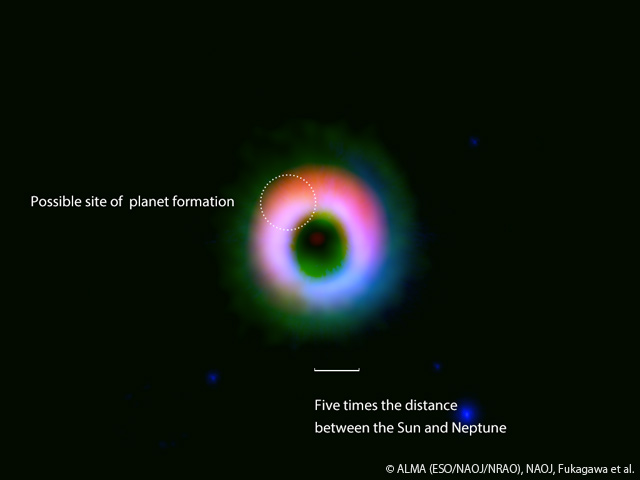ALMA Discovers a Formation Site of a Giant Planetary System
| Science
A team of Japanese astronomers has obtained a firm evidence of formation of a giant planetary system around a young star by the observations with the Atacama Large Millimeter/submillimeter Array (ALMA). This result has a transformative impact on the theories of planet formation and gives us a clue to the origin of a wide variety of planetary systems.

The research team observed a young star named HD142527 in the constellation Lupus (the Wolf) with ALMA. The ALMA image shows that cosmic dust, which is component material of planets, is circling around the star in a form of asymmetric ring. By measuring the density of dust in the densest part of the ring, the astronomers found that it is highly possible that planets are now being formed in that region. This region is far from the central star, about 5 times larger than the distance between the Sun and the Neptune. This is the first firm evidence of planet formation found so far from the central star in a protoplanetary disk.
The research team plans further observations of HD142527 with ALMA for closer investigation, as well as other protoplanetary disks to have a comprehensive understanding of the planet formation in general.
The research findings are presented in the article Fukagawa et al. “Local Enhancement of Surface Density in the Protoplanetary Ring Surrounding HD 142527” published in the Publications of the Astronomical Society of Japan, on December 25th, 2013.